News
More resources – not fewer – are needed to combat malnutrition in northern Nigeria
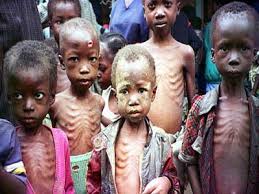
More resources – not fewer – are needed to combat malnutrition in northern Nigeria
By Dr. Simba Tirima
MSF’s outgoing country representative in Nigeria, Dr Simba Tirima, reflects on how the disruption of aid will impact the long-term response to combating malnutrition, maternal mortality, and infectious diseases.
For the last (almost) eight years, I have had the privilege of calling Nigeria home. First as a deputy head of mission and now as the country representative, I have seen first-hand how my organization, Doctors Without Borders/Médecins Sans Frontières (MSF), has responded with compassion in the face of disease outbreaks, natural disasters, and recurring crises.
I have also seen how other organisations – both international and local – have stepped up to support authorities in tackling many of these same issues. We at MSF know we can’t fix every global medical issue by ourselves; partnerships are critical.
In many ways, MSF remains as stable as ever. Because 99 percent of our funding comes from individual donors, our decisions are dictated by patients’ needs and not political priorities. But with the dramatic draw-down of funding from the US and other rich countries, we will all feel those impacts.
Nigeria is about to enter the peak season of malnutrition, which continues to afflict more Nigerian children than when I first moved here. It’s a serious condition that is not only dangerous or deadly in the short term but can also lead to long term developmental issues; stunting can occur even from moderate malnutrition. Investing in the reduction of malnutrition isn’t just humane – it’s an investment in Nigeria’s future prosperity.
In 2024, more than 250,000 children with severe acute malnutrition (SAM) were admitted to MSF- supported outpatient facilities (Out-Patient Therapeutic Program, OTP) and 76,000 acutely malnourished children with medical complications to inpatient facilities (Stabilization Centers, SC), representing an increase of 38 percent and 53 percent respectively compared to 2023.
In many of our hospitals last year, our teams saw so many children that we had to increase bed capacity, open every emergency tent we had, put mattresses in corridors and every available space, and treat two or three children per bed. Just in the case of one hospital – Katsina Hospital, the largest of our hospitals focused on malnutrition – we struggled to support the more than 25,000 children admitted to hospital over the course of the year. During the malnutrition peak, we often admitted a child every 5 minutes at the hospital because of complications of acute malnutrition. Overall, the Katsina ITFC admissions were 35 percent higher than in 2024.
Late last year, a food insecurity and malnutrition analysis – led by the Nigerian government – projected that 33.1 million people will face high levels of acute food insecurity during the 2025 lean season (June to August) — seven million more people affected than in 2024.
As we near the lean season this year, these projections are already tracking. Many of our hospitals are already seeing higher numbers than last year. In the most northwestern state of Kebbi for example, just in the month of April we admitted 41.8 percent more patients than in April 2024. In Kano State, one MSF-supported Ministry of Health primary inpatient therapeutic feeding centre (ITFC) – Unguwa Uku Primary Health Centre – is at full capacity; we are projecting that the other one we support – ITFC at Murtala Mohamed Hospital – will also soon hit capacity. MSF-supported facilities across northern Nigeria are likely to face an influx of patients, as in many areas—such as Shinkafi and Zurmi in Zamfara State—MSF is the sole provider of inpatient care for malnourished children.
While we are making the necessary arrangements to treat these projected number of patients by expanding bed capacity, recruiting more health care workers, and starting mobile clinic activities, the cuts and changes in logistics around USAID will inevitably have an impact on the northern region, where we treat people. UNICEF, for example, receives most of its funding from USAID and is a leading distributor of life-saving ready-to-use therapeutic food (RUTF) to international, national, and local organizations. Many questions and concerns remain about how these drastic changes will disrupt the flow of food to those who need it most. As more children than ever are projected to suffer from malnutrition, we need more resources – not fewer – to ensure they survive the lean season.
There are no shortages of factors contributing to this crisis. A devastating mix of rising food prices, displacement, insecurity, climate-induced crop failures, low immunisation coverage, and a lack of drinkable water and sanitation leave more children susceptible to developing malnutrition. Sustainable strategies to mitigate these factors must continue to be developed – including by MSF. But having worked on this issue for years, I know that aid funding for food alone will not solve the problem. Without it, Nigerian children will continue to die.
For decades, the humanitarian sector has operated under the assumption that if one donor withdrew, another would step in. That assumption no longer holds. New donors and solutions are critically needed at this moment to analyze RUTF needs and treatment gaps, invest in vaccination and primary health care, and tackle malnutrition in northern Nigeria.
Make no mistake, this seismic structural collapse will produce ripple effects for generations, the scale as big as pandemics. Some of those ripples will be more obvious than others, but we will all feel the impacts in one way or another. It’s up to all of us to correct the course today.
More resources – not fewer – are needed to combat malnutrition in northern Nigeria
News
Nigerian Solidarity Groups Mourn Cubans Killed in Venezuela, Condemn U.S. Actions

Nigerian Solidarity Groups Mourn Cubans Killed in Venezuela, Condemn U.S. Actions
By: Michael Mike
The Nigeria Movement of Solidarity with Cuba (NMSC) has expressed deep condolences to the government and people of Cuba following the killing of 32 Cuban internationalists in Venezuela.
In a press statement issued in Abuja on Saturday, the pro-people coalition, which includes labour unions, civil society organisations and intellectuals, alleged that the Cuban nationals were killed during an attack in Caracas on January 3, 2026, while protecting Venezuelan President Nicolás Maduro, his wife, Cilia Flores, and what it described as the sovereignty of Venezuela.
The group said the Cubans chose to resist despite being overwhelmed, describing their actions as a demonstration of courage, honour and commitment to international solidarity.
NMSC drew parallels between the incident and past historical events where Cuban nationals were involved in overseas struggles, including the 1983 U.S.-led invasion of Grenada and Cuba’s military support for African liberation movements in Angola, Namibia and South Africa during the fight against apartheid.
According to the organisation, thousands of Cuban youths lost their lives in Africa while contributing to the dismantling of apartheid systems backed by Western powers. The group noted that Cuba’s internationalism has not been limited to armed conflicts, citing the country’s long-standing medical outreach to developing nations, including Nigeria.
The statement also recalled Cuba’s response during the COVID-19 pandemic, when it dispatched medical teams to dozens of countries and received hundreds of stranded cruise ship passengers at a time many nations had closed their borders.
NMSC extended its sympathy to the families of those killed in Venezuela and called on the United States government to respect international law, halt what it described as foreign military interventions, and lift sanctions imposed on Cuba, Venezuela and other countries.
The group further aligned itself with repeated resolutions of the United Nations General Assembly calling for the end to the decades-long U.S. embargo against Cuba, insisting that global peace and development require cooperation rather than conflict.
The statement was signed by veteran labour activist and writer, Owei Lakemfa, on behalf of the Nigeria Movement of Solidarity with Cuba
Nigerian Solidarity Groups Mourn Cubans Killed in Venezuela, Condemn U.S. Actions
News
NGX’s N100 trillion milestone, proof of growing sophistication of Nigeria’s capital market- Stockbrokers

NGX’s N100 trillion milestone, proof of growing sophistication of Nigeria’s capital market- Stockbrokers
The Chartered Institute of Stockbrokers (CIS) and the Association of Securities Dealing Houses of Nigeria (ASHON) have congratulated the Board, Management, and staff of Nigerian Exchange Group Plc and Nigerian Exchange Limited on the historic achievement of the Nigerian capital market crossing the N100 trillion market capitalisation mark.
The commendation was issued via a press statement on Friday, jointly signed by Mr Samuel Sehinde Adenagbe, Chairman, Association of Securities Dealing Houses of Nigeria and Mr Oluropo Dada, the 13th President/Chairman of Council Chartered Institute of Stockbrokers.
They described the NGX’s achievement as a remarkable milestone and a major affirmation of the resilience, depth, and growing sophistication of Nigeria’s capital market, and a clear signal of renewed investor confidence in the Nigerian economy.
“Crossing the N100 trillion threshold is not only a symbolic landmark; it reflects the capacity of Nigeria’s capital market to mobilise long-term funds for infrastructure, enterprise development, and economic transformation.
“It underscores the vital role of the market in financing growth, creating wealth for investors, and supporting national development objectives,” the said.
According to them, the achievement will not have been possible without the visionary leadership and strategic direction of the NGX Board, as well as the professionalism and dedication of its Management and staff, led by versatile stockbrokers: Dr. Umaru Kwairanga; Mr. Temi Popoola; and Mr. Jude Chiemeka and Mr. Femi Sobanjo.
“We also commend the unwavering commitment and versatility of dealing member firms and stockbrokers who continue to serve as the backbone of the market, ensuring liquidity, transparency, and investor protection.
“Their collective efforts have strengthened market integrity, broadened participation, and improved the overall efficiency of the Exchange.”
The CIS and ASHON also commend the Federal Government of Nigeria for providing a supportive macroeconomic and regulatory environment that has encouraged domestic and foreign investment, promoted market reforms, and enhanced the attractiveness of Nigerian assets.
They stated that policy stability, ongoing reforms, and a clear commitment to private sector-led growth have played a crucial role in creating the conditions for this historic market expansion.
They further commended SEC for providing sound regulations and market development.
They stated that the CIS and ASHON would continue to advocate ethical governance in the capital market with all stakeholder playing by the rules of the game.
They further restated their commitment to sustaining the momentum through robust regulation provided by Securities and Exchange Commission, market innovation, and strong investor protection frameworks.
“We look forward to working closely with all stakeholders to further deepen the market, broaden product offerings, and ensure that the Nigerian capital market continues to serve as a strong engine for inclusive and sustainable economic growth.”
NGX’s N100 trillion milestone, proof of growing sophistication of Nigeria’s capital market- Stockbrokers
News
Troops neutralise bandit, recover arms in Plateau raid
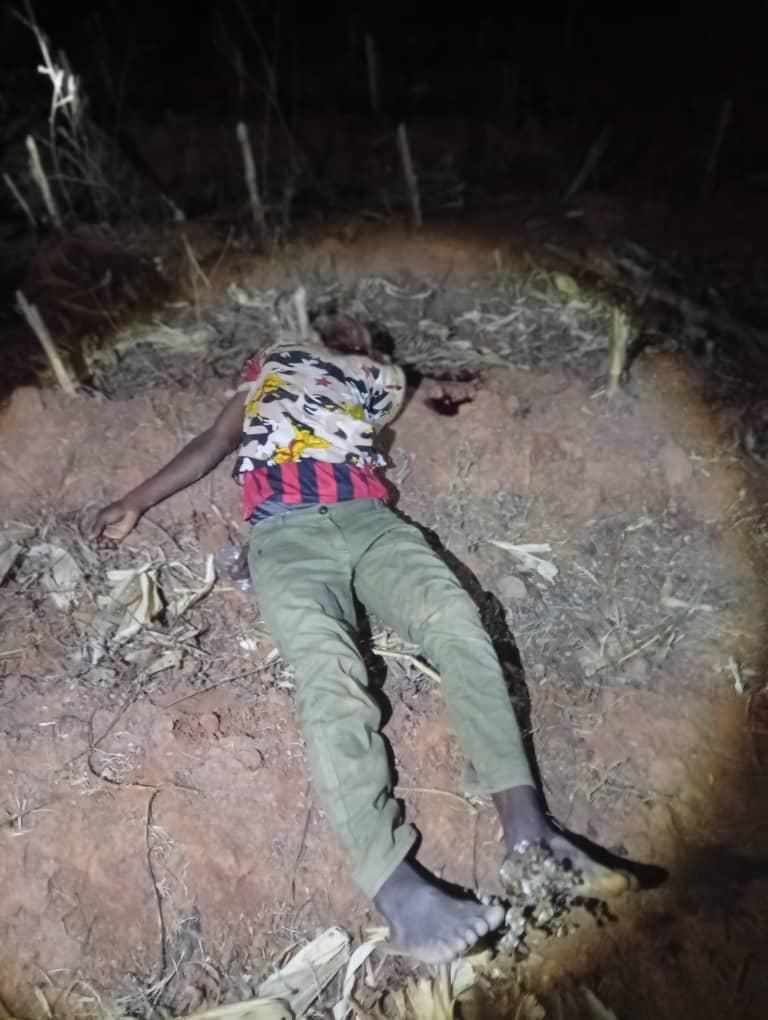
Troops neutralise bandit, recover arms in Plateau raid
By: Zagazola Makama
Troops of 3 Division of the Nigerian Army, under the Joint Task Force Operation Enduring Peace (JTF OPEP), have neutralised a notorious bandit and recovered arms and ammunition during a raid on a hideout in Plateau State.
Sources told Zagazola Makama that the operation was conducted on Jan. 8 at Yolan Gboka–Yama Da Lahdi, following sustained efforts to track and arrest perpetrators of the Dec. 16, 2025 attack on illegal miners at Tosho community in Fann District, Barkin Ladi Local Government Area.
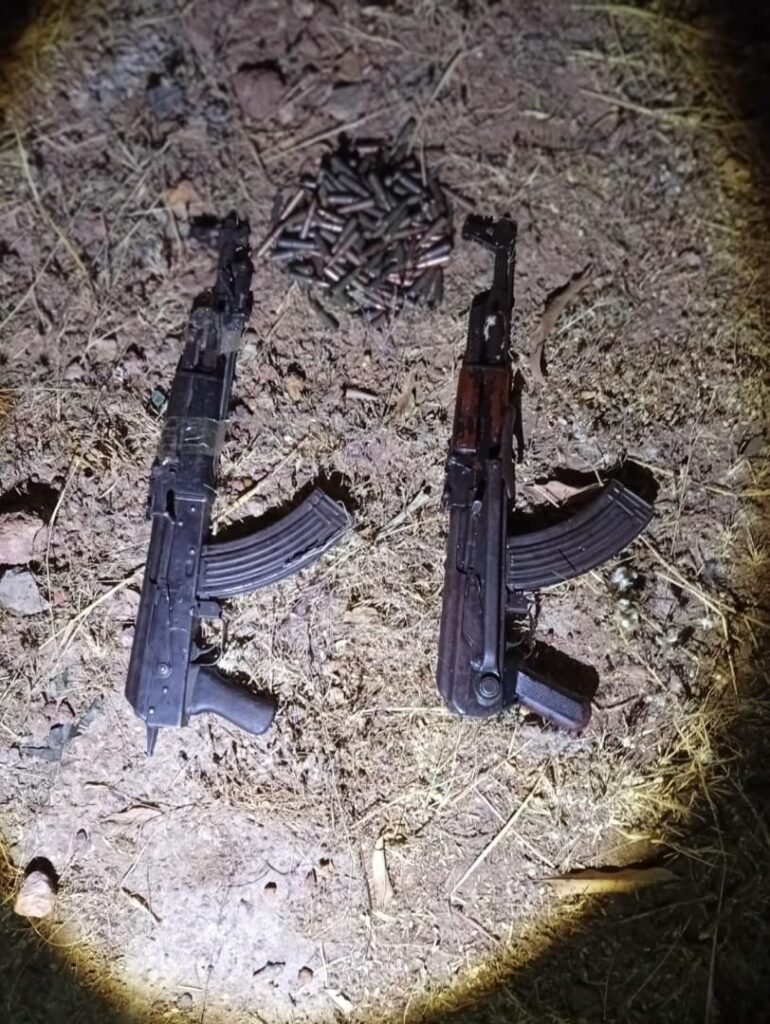
According to the sources, troops made contact with the bandits during the raid and engaged them in a firefight.
“One of the bandits was neutralised during the exchange of fire and was later identified as Sadiq Isah, while others fled the area,” the sources said.
The sources added that troops subsequently exploited the hideout and recovered two AK-47 rifles and 162 rounds of 7.62mm (special) ammunition.
The recovered arms and ammunition are currently in military custody, while troops have commenced follow-up operations to intercept the fleeing suspects and prevent further criminal activities in the area.
Zagazola reports that Operation Enduring Peace is a joint security initiative aimed at restoring peace and stability across Plateau and neighbouring states.
Troops neutralise bandit, recover arms in Plateau raid
-

 News2 years ago
News2 years agoRoger Federer’s Shock as DNA Results Reveal Myla and Charlene Are Not His Biological Children
-

 Opinions4 years ago
Opinions4 years agoTHE PLIGHT OF FARIDA
-
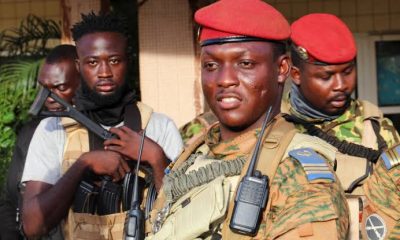
 News9 months ago
News9 months agoFAILED COUP IN BURKINA FASO: HOW TRAORÉ NARROWLY ESCAPED ASSASSINATION PLOT AMID FOREIGN INTERFERENCE CLAIMS
-

 Opinions4 years ago
Opinions4 years agoPOLICE CHARGE ROOMS, A MINTING PRESS
-
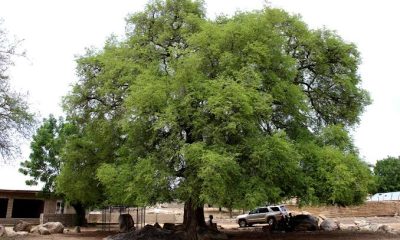
 News2 years ago
News2 years agoEYN: Rev. Billi, Distortion of History, and The Living Tamarind Tree
-
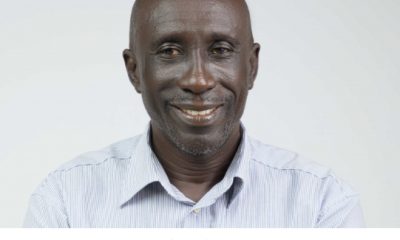
 ACADEMICS2 years ago
ACADEMICS2 years agoA History of Biu” (2015) and The Lingering Bura-Pabir Question (1)
-

 Columns2 years ago
Columns2 years agoArmy University Biu: There is certain interest, but certainly not from Borno.
-

 Opinions2 years ago
Opinions2 years agoTinubu,Shettima: The epidemic of economic, insecurity in Nigeria





